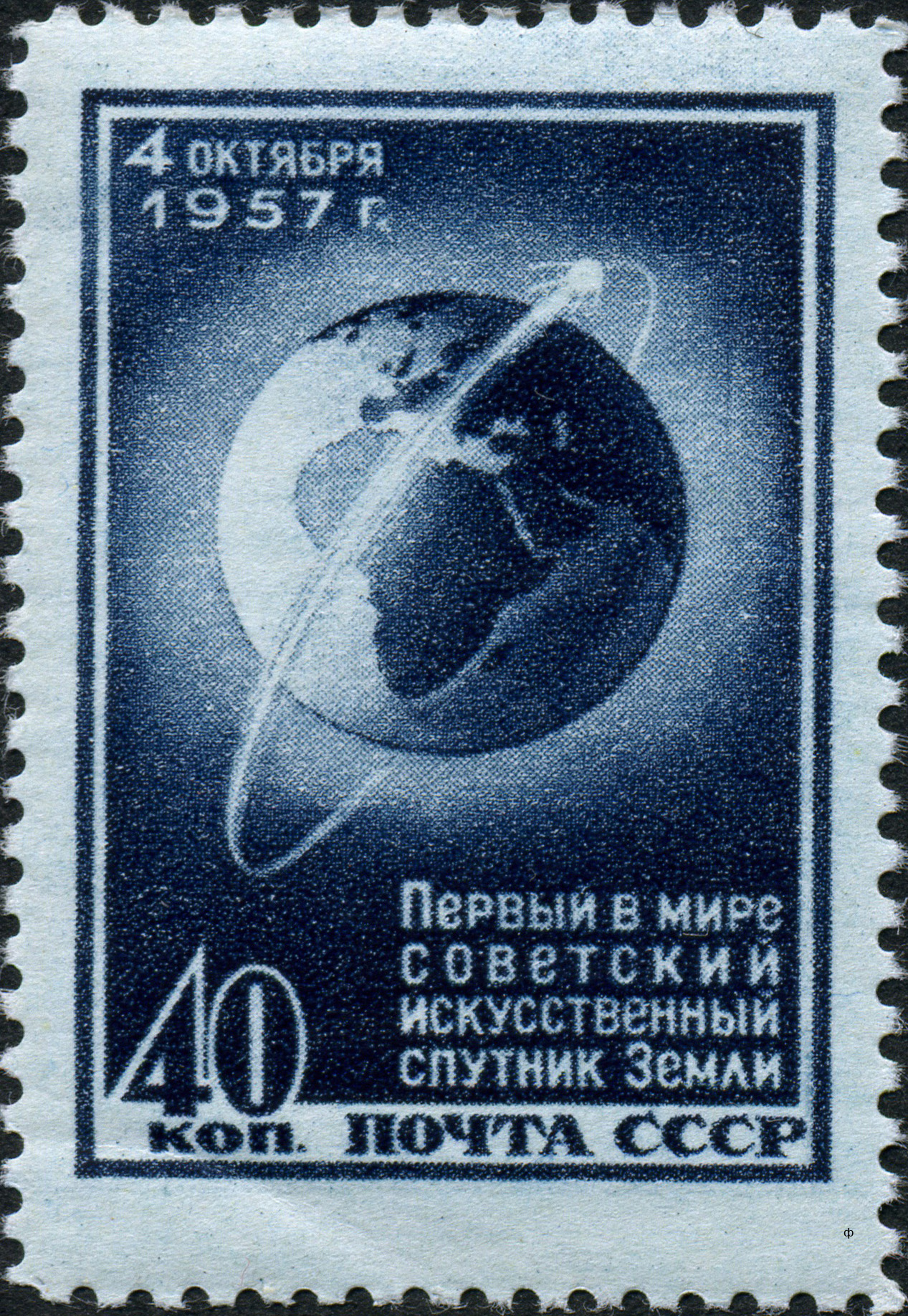
Today marks the 5oth anniversary of the beginning of the Space Age and the Space Race. The Space Age and its Race was the result of the Cold War, which began with the Atomic Age. Not surprisingly the Atomic Age over laps the Space Age, in fact the Space Race not only superseded that short age, but was far more popular. Considering that the former meant the end of the world as we know it, and the latter meant finding other worlds.
While the Americans launched the Atomic Age it was the Soviet Union which launched the Space Age and its Race to the Moon.
History changed on October 4, 1957, when the Soviet Union successfully launched Sputnik I. The world's first artificial satellite was about the size of a basketball, weighed only 183 pounds, and took about 98 minutes to orbit the Earth on its elliptical path. That launch ushered in new political, military, technological, and scientific developments. While the Sputnik launch was a single event, it marked the start of the space age and the U.S.-U.S.S.R space race.
The story begins in 1952, when the International Council of Scientific Unions decided to establish July 1, 1957, to December 31, 1958, as the International Geophysical Year (IGY) because the scientists knew that the cycles of solar activity would be at a high point then. In October 1954, the council adopted a resolution calling for artificial satellites to be launched during the IGY to map the Earth's surface.

Both ages come as result of WWII. And it is ironic that while the Atomic Age was the collective effort Allied scientists and the U.S. military exemplifying the best aspects of a planned economy, the space race was begun in a collectivist state by the individual efforts of a scientist worthy of being a character in an Ayn Rand novel.
Sputnik was a spur of the moment gamble driven by the dream of one scientist, whose team scrounged a rocket, cobbled together a satellite and persuaded a doubting Kremlin to usher in the space age.
In a series of interviews with the Associated Press, Boris Chertok, one of the founders of the Soviet space programme, has told the little-known story of how Sputnik was launched and what an unlikely achievement it was.For much of his life, Mr Chertok couldn't whisper a word about the project, which culminated in Sputnik entering orbit on October 4 1957.
His identity, along with that of Sergei Korolyov, the chief scientist, was a state secret. Today, aged 95, he can finally express his pride at the pivotal role he played in the history of space exploration.
"Each of these first rockets was like a beloved woman for us," he said. "We were in love with every rocket - we desperately wanted it to blast off successfully. We would give our hearts and souls to see it flying."
As described by the former scientists, the world's first orbiter was born out of a separate Soviet programme: the development of a rocket capable of striking the US with a hydrogen bomb.
Today the Space Race is on again in earnest. The Chinese have launched their first successful rocket into space. Canada, NASA, Russia, India, the European Space Agency, Japan, all have space programs. What we don't have is a common space program. Instead everyone, including the private sector, is once again competing to get to the Moon and to Mars.
Rather than developing a common space station in the Lagrange 5,an area in space where a space station could exist in perpetuity, we have a disposable station being built as a joint US/Canada/Russian venture, that will once again become space junk.
Once the space race began in earnest fifty years ago, humanity focused upwards to the skies. And it is no coincidence that as we launched space probes, space aliens appeared in popular culture to probe us.
SEE:
Drunks In Space
The Moon Is A Harsh Mistress
Canada Celebrates Star Wars
Star Wars The Next Installment
Science or Tourism
Find blog posts, photos, events and more off-site about:
space, litter, debris, NASA, Atlantis, satelittes, UFO, grabage, junk, spacewar, L5, Lagrange, Lagrange5, sci-fi, space-colonization, space, space-colony, space-station, Budget, Moon, Tourism, Space, Science,

